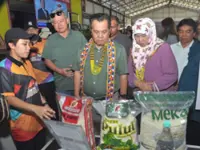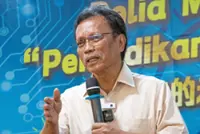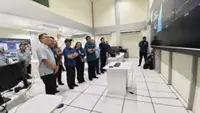One, two, three: Simeon (left) and Fu teamed up to create the song which has a structure tailored to suit early learners.
KOTA KINABALU: It all began with a casual conversation, which led to a groundbreaking learning tool that could transform how young Malaysian children learn to count.
Motivated by the challenges faced by preschoolers and children with numeracy difficulties, Dr Fu Sai Hoe, a specialist in mathematics intervention, sought a creative solution.





